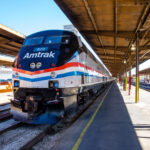No single event in modern times has had a larger global impact than the COVID-19 pandemic. It has disrupted our lives, exposed our inequalities, and altered our use of space within our cities. However, 2020 has been the greatest year for cycling in decades. In many places, both cycling and walking have increased significantly. Without cars clogging the streets, people have been able to reclaim space. In some parts of Jakarta, cycling ridership went up to 1,000 percent. From Buenos Aires to Guangzhou, people opted to hop on bicycles rather than into cars. The best news is that cities followed suit. From creating pop-up cycle lanes, to closing down streets to vehicular traffic, to using coveted street parking for outdoor dining, cities responded quickly to make traveling safer. The common backlash or red tape dissipated in the face of an urgent pandemic demanding immediate responses. What we have seen are creative and far-reaching solutions that support sustainable mobility and make cities safer for walking and cycling. As we move into the new year, with some aspects of daily life returning to normal, many of these solutions should become permanent fixtures in cities: a transition into a new, better normal. We have gathered examples of sustainable transportation solutions from the cities where ITDP works and has offices.
The post Bicycles: The Future Mode for Traffic Choked Jakarta appeared first on Institute for Transportation and Development Policy.







